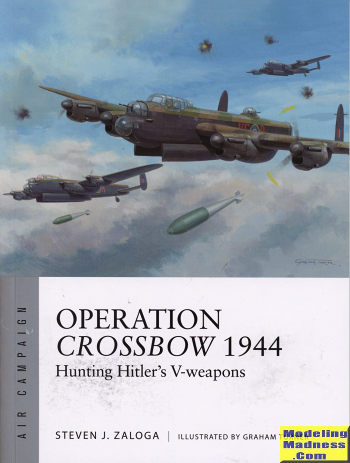 During WWII,
Germany was the first nation to operationally use a number of then-advanced
weapons. Many of these were developed by Germans as well and are things which
are pretty much taken for granted in today's world. Two of these were the cruise
missile and the ballistic missile. We know these better as the V-1 and V-2,
though officially they are the FZG-76 and A-4.
During WWII,
Germany was the first nation to operationally use a number of then-advanced
weapons. Many of these were developed by Germans as well and are things which
are pretty much taken for granted in today's world. Two of these were the cruise
missile and the ballistic missile. We know these better as the V-1 and V-2,
though officially they are the FZG-76 and A-4.
As with many weapons put into use during the mid-late
war period, it was hoped by Hitler and his bunch that they would prove to be so
devastating as to turn the tide of the war (which at that time was not going too
well). As with many weapons developed and put into operational use, they did not
and used resources that could have been better used elsewhere.
To provide a bit of a refresher, the V-1 was powered by
a pulsejet, which basically dumped fuel into a chamber where it was ignited and
provided thrust. However, for it to get enough air, it had to have a boost. Sort
of like a ramjet. The Germans never did develop proper solid boosters so this
missile required a long ramp to get to speed and that speed was provided by a
piston that pushed the missile to where the engine would properly provide
thrust. It also meant a somewhat expensive and difficult to hide launch site.
The V-2 on the other hand, while quite large, could be
launched from just about anywhere and was using mobile launch equipment. The
German Army also chose to pick the launch sites for these missiles in the middle
of populated areas in occupied territory, thereby reducing the Allies ability to
blow the site (and surrounding area) to bits as the casualty rate would have
been too high. Most V-2s were launched from the Hague so you can see the
conundrum.
There were other V weapons such as a very long gun that
had charges fired as the shell travelled through the barrel. This meant a fixed
site that was limited to aiming at one target. London was the main choice as
with the other V weapons. This never reached operation as the site was bombed
quite frequently.
This book goes into the operation to discover and reduce
the threat of the V-1 and to some extent the V-2 and the big gun. When starting
the V-1 sites, it was envisioned to have everything done at one place. It meant
a large complex and a lot of building. It did not take long for the Allies to
get wind of this. These large sites, despite super thick reinforced concrete
structures that were basically bomb-proof were rather quickly made moot by
turning the area surrounding them into a moonscape and not allowing equipment to
get into them.
The somewhat smaller 'ski' sites were also easy to find.
It wasn't until even smaller somewhat more well hidden sites were developed that
the V-1 assault could begin. Of course, the Normandy invasion eventually meant
that these sites were over run and V-1 operations were finally too far from
London, though there were attacks on Paris and Antwerp.
The author does a
great job of telling the story. His insights into the politics of the situation
(and there was a lot of in-fighting between various factions in the USAAF and
RAF as well as between each other) helps us to understand the trials and
tribulations of the Allied response as well as the changing tactics. There are a lot of great photographs and the art work and illustrations are
super helpful in telling the story. It is a book that enthusiasts of this area
of WW2 should have on their shelves. Highly recommended.
August 2018
Copyright ModelingMadness.com. All rights reserved.
For more on the complete line of Osprey books,
visit www.ospreypublishing.com .
If you would like your product reviewed fairly and quickly, please
contact
me or see other details in the
Note to
Contributors.
 During WWII,
Germany was the first nation to operationally use a number of then-advanced
weapons. Many of these were developed by Germans as well and are things which
are pretty much taken for granted in today's world. Two of these were the cruise
missile and the ballistic missile. We know these better as the V-1 and V-2,
though officially they are the FZG-76 and A-4.
During WWII,
Germany was the first nation to operationally use a number of then-advanced
weapons. Many of these were developed by Germans as well and are things which
are pretty much taken for granted in today's world. Two of these were the cruise
missile and the ballistic missile. We know these better as the V-1 and V-2,
though officially they are the FZG-76 and A-4.